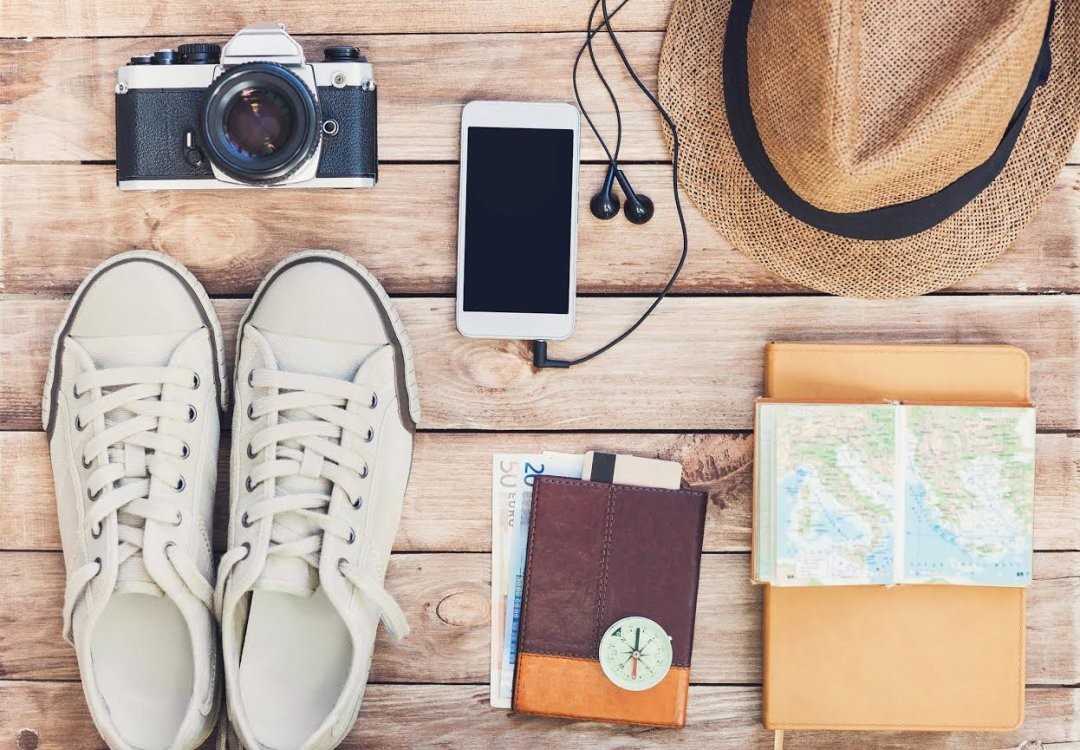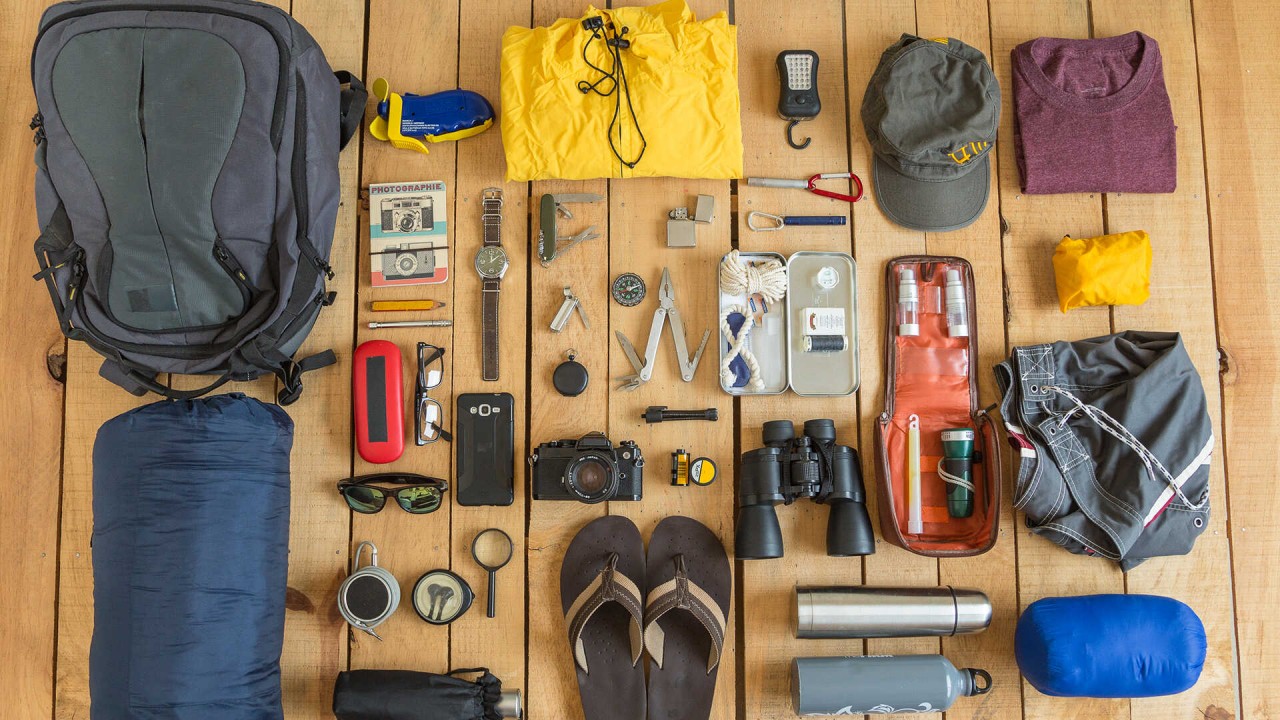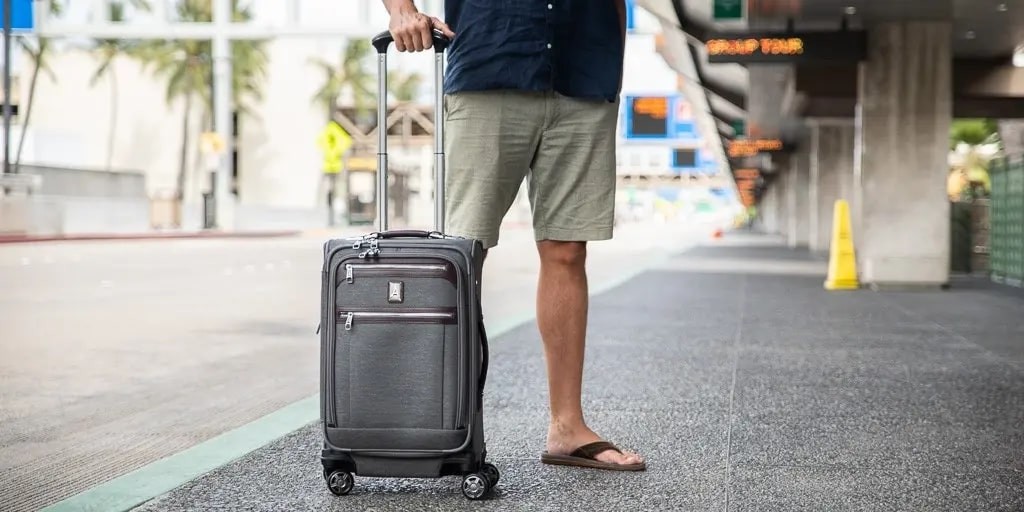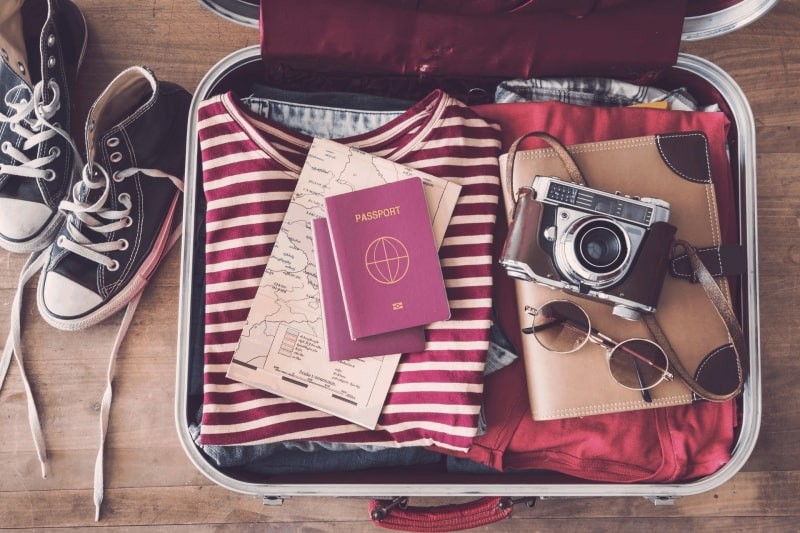Tips For Packing Smart While Traveling Abroad
Packing is pivotal. Forget an essential item and you're left disappointed and scrambling to find the nearest store in your destination. Pack too much and you end up disorganized, burdened with heavy bags, and hemorrhaging money to pay for pricey airline baggage fees.
Making a packing list is often a fail-proof method to avoid leaving out an important thing back home, such as your phone charger, earphones, slippers, etc. So to save yourself from the last-minute hassle, you must get started with your packing list weeks before your departure date!
1. Essentials
 |
| Photo: St Christopher's Inns |
- Paperwork: Passport, visa and important documents deserve a folder to be stored safely. Make sure to keep photocopies of the same.
- Medications: keeping healthy is the first and foremost thing, so if you are taking any medication or supplements vital to your health, then those should be packed amongst the first items along with their prescriptions.
- Local Currency: while traveling abroad, you will definitely need their local Currency when you land, so carry a safe amount, not a lot, but not too little. You can very well withdraw more money once you have settled in
- Basic Toiletries: pack your toothbrush, travel size paste, soap shampoo etc., anything you need to be prepared to freshen up for at least 3-4 days. Because while you can buy other toiletries when you go there, you should be able to manage for a week, because as you land you might not have time to buy these things, you will be settling in, and in that case, it is better to be prepared
- Electronics: make sure to pack your charges, power banks, laptop accessories.
2. Know your airline's baggage-fee policy
Figuring out the airlines' tricky and befuddling baggage-fee policies is key to any budget-minded packing strategy. While most airlines permit travelers to check at least one bag on international flights, the majority of U.S. carriers charge big bucks for bags checked on domestic flights. Spirit Airlines—that notoriously customer-unfriendly discounter—even charges as much as $100 for carry-on bags.
Before you begin packing, take a peek at your airline's website and read its baggage policy. This is something you might even want to do prior to buying your plane ticket, especially if you're set on bringing a checked bag or two. Consider flying on Southwest or JetBlue, both of which permit at least one free checked bag on domestic flights.
3. Keep your stuff organised
 |
| Photo: Smarter Travel |
No matter how tempting it seems to throw all your stuff clumsily into your bags to save time and effort, you should resist the urge as it will only cause you more trouble! You will ruin your clothes with wrinkles, suffer leakage of any liquid product in your bag, or have difficulty finding the items you need on time since everything is cluttered inside!
So that’s why many travel experts often emphasise that while you begin packing your stuff, you must do it in an organised way! For that purpose, you can buy several pouches and add products and items alike inside them, such as toiletries in one, make-up items in another, etc. Also, when you pack your clothes inside your luggage bag, make sure to roll instead of folding them. It is an effective method to prevent your clothes from getting deep wrinkles, plus it allows you to have more space in your bag.
4. Follow the 3-1-1 rule
What happens if you don't follow the Transportation Security Administration's (TSA) 3-1-1 rule for carry-on luggage? Attempt to bring a large bottle of shampoo or a full-size gel deodorant through the security line and the TSA will likely confiscate your stuff, holding you up in line in the process. So get familiar with the agency's rules: All liquids brought onto planes must be in 3.4-ounce bottles or smaller and inside a single, clear, quart-size zip-top bag.
It also helps to know which items are, according to the TSA, considered liquids or gels and thereby subject to the 3-1-1 rule. This isn't as simple as it sounds. Foods such as peanut butter, pudding, mashed potatoes, and icing are classified as gels. Mascara, lip gloss, and aerosol items are also classified as liquids or gels. But keep in mind that liquid prescription medication is exempt. See a more complete list of liquids and gels that are not permitted in carry-on luggage in quantities greater than 3.4 ounces here.
5. Put your valuables in your carry-on bag
 |
| Photo: The New York Times |
You should always put your valuable items like your phone, passport, official documents, wallet, jewellery, laptop, etc., in your carry-on bag and not in your checked luggage. When you travel on a plane, there is always a risk involved with your luggage getting lost or stolen. So, to avoid such adverse scenarios of losing your expensive and crucial things, you should always bring them on the aeroplane in your carry-on bag!
6. Clothes
 |
| Photo: Style by Savina |
Do your research well because the climate is the deciding factor for this section. Sometimes in cold-weather places, you can carry 1-2 heavy jackets to help you survive for the initial period, and then you can buy more items from the local shops. This is important to note for cold weather as jackets/sweaters/ socks all take up a lot of packing space, and you wouldn’t want to fill your entire suitcase with just these.
Irrespective of the weather, you should keep a mix of time like: long and short sleeves t-shirts/tops, jeans, and track pants.
Underwear is a crucial decision. Make sure to keep enough for you to survive 8 to 10 days. This is because you still have to figure out your laundry facility in your student accommodation in Glasgow. It will also take time to find the stores you can buy more from, till then you need to have back up.
Shoes: this item takes space, so decide wisely. Keep one of each kind, to begin with. So keep one pair of sports shoes, two pairs of slippers, slip-on, and boots depending on the weather.
7. What not to pack
 |
| Photo: Travelling with Diana |
Do not pack lots of snacks. Keep the only items you think you won’t find in your new city; these may be things local to your culture. But even in that, do not get overboard because these times may often get spoiled on the way. Also, keep in mind what your airline allows to be carried in food items.
Books: if you are a book lover, you should also know the amount of space and weight they will need if you decide to take more than 3 or 4. Instead of wanting to take them with you, you can find libraries in your college or city and use them to fulfill your reading needs. Or even better, consider ebooks and online reading services!
Culturally inappropriate clothes: every culture has it's own unsaid dos and don’ts, so if you are moving to a culture you have no idea about, then read up on it.
Try not to pack costly items. You will be living in a new house/hostel, and you might not know anyone there initially, so it will become challenging to keep track of costly items you own without worrying that they will be safe.
 | Top 10 Gym Bag Essentials: From Clothing to Tech Gears It is important to prepare everything before a gym class and have everything at hand. Here are the 10 essential gym items that you will ... |
 | Summer Tips: How to Get Sun Tan Fast and Safe Tanning is considered a beautiful standard in women in some countries and makes women appear attractive in front of men. There are many safe ways ... |
 | Full Guide To Quy Nhon Beach Nha Trang is one of the most famous tourist destinations in Vietnam, and Quy Nhon beach, a well–known spot there, possesses a pristine and peaceful ... |
Recommended
 Handbook
Handbook
Vietnam Moves Up 8 Places In World Happiness Index
 Handbook
Handbook
Travelling Vietnam Through French Artist's Children Book
 Multimedia
Multimedia
Vietnamese Turmeric Fish among Best Asian Dishes: TasteAtlas
 Handbook
Handbook
From Lost to Found: German Tourist Thanks Vietnamese Police for Returning His Bag
 Handbook
Handbook
Prediction and Resolution for the Disasters of Humanity
 Handbook
Handbook
16 French Films To Be Shown For Free During Tet Holiday In Vietnam
 Handbook
Handbook
Unique Cultural and Religious Activities to Welcome Year of the Snake
 Handbook
Handbook


